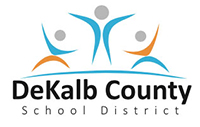DeKalb County School District
DeKalb County School District (DCSD) is Georgia’s third largest school system. Under the leadership of the Superintendent and the Board of Education, we prepare students for college and careers through a laser focus on rigorous, relevant classroom instruction related to each child’s needs.
The District serves over 92,000 students, 138 schools and centers, and 14K employees, including 6,600 teachers. Students and parents speak over 172 languages and represent over 155+ nations. With a laser focus, DCSD is a leader in STE(A)M curriculum with 32 certified STE(A)M schools and programs. School choice options are available in nearly 50 schools to include theme, magnet, IB, charter, and Montessori options.
VISION – To prepare students for success as lifelong learners and responsible global citizens
MISSION – To promote the academic, social, and emotional growth of each student by fostering a safe, supportive, and engaging learning environment
Vision
To prepare students for success as lifelong learners and responsible global citizens
Mission
To promote the academic, social, and emotional growth of each student by fostering a safe, supportive, and engaging learning environment.
Core Beliefs
We believe
Goal Areas and Performance Objectives
Goal Area 1: Student Academic Success with Equity and Access
1.1 Increase proficiency rates in literacy on district and state assessments for all students.
1.2 Increase proficiency rates in numeracy on district and state assessments for all students.
1.3 Increase the 4- and 5-year cohort graduation rates.
1.4 Ensure all students have equitable access to and support for academic programs and career pathways.
1.5 Improve student academic growth as measured by the College and Career Readiness Performance Index (CCRPI).
1.6 Enhance student proficiency in digital literacy skills using innovative technology.
Goal Area 2: School, Family, and Community Engagement
2.1. Strengthen family, school, and community engagement to establish clear, accessible, and relevant communication tailored to meet stakeholders’ preferences.
2.2. Create opportunities for collaboration between the district, families, community partners, and businesses to foster partnerships to support district-wide initiatives.
2.3. Improve communication processes for stakeholders to ensure the flow of clear, timely, and relevant information.
2.4. Establish clear communication channels to effectively engage with multilingual families and provide equitable access to district and school information.
Goal Area 3: Recruit, Develop, and Retain Talent
3.1. Recruit and hire a diverse and highly qualified workforce that reflects a world-class, innovative talent pool.
3.2. Develop high performing staff to ensure quality teaching and learning outcomes, an innovative workforce, and visionary leaders.
3.3. Retain highly effective staff in critical needs positions to ensure the sustainability and efficiency of integral district programs and services.
3.4. Develop employee pipelines for key staff positions to ensure the long-term viability of essential programs and services.
Goal Area 4: Culture and GOAL AREA 4 Climate
4.1. Ensure all schools provide a safe, orderly, and supportive learning environment for all students and staff.
4.2. Implement restorative practice structures in all schools and increase the number of schools using Positive Behavioral Interventions and Supports (PBIS) programs each year.
4.3. Improve student attendance by creating a positive and engaging school experience.
4.4. Ensure all schools have staff trained in de-escalation techniques and Crisis Prevention Intervention (CPI) strategies.
Goal Area 5: Mental Health and Wellness
5.1. Create safe and supportive environments that promote positive mental health and wellness.
5.2. Increase awareness of factors that can impact mental health to foster well-managed learning environments.
5.3. Increase mental health support staff to improve classroom behavior and peer relationships.
5.4. Expand staff participation in mental health professional learning opportunities.
Goal Area 6: Organizational Excellence
6.1. Provide clean, safe, and efficient school facilities for all students.
6.2. Deliver safe and efficient transportation services to all students.
6.3. Deliver efficient school nutrition services and healthy meals to all students.
6.4. Improve and maintain a secure, accessible, and equitable digital learning environment for all students.
6.5. Ensure excellent financial management of district resources.
Facilities
170 facilities/sites consisting of:
History & Area
DeKalb County School District was established in 1873 when residents raised $4,200 to open public schools.
As Georgia’s third largest school system, the District covers 257 square miles within DeKalb County, excluding the areas served by Atlanta Public Schools and City Schools of Decatur.


